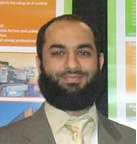Chair
Ian MacLellan, President and CEO, Ubiquity Solar Inc.
Panelists
Nic Morgan, Co-founder and VP Business Development, Morgan Solar
Jan Dressel, President & Managing Director, SPARQ Systems Inc
Ray Morgan, Director Outreach, PV/Solar & Semiconductor, SEMI Americas
Rafael Kleiman, Professor, Director, McMaster University
Clemens van Zeyl, CEO & Co-Founder, ARDA Power Inc.
An interesting panel discussion took place on innovation. The panel discussed the meaning of innovation from different points of view. Everyone agreed that Solar is happening faster than everyone expected. In 2001, it was predicted that the world market for new installations in 2010 would be 2.8GW. In 2006, the prediction was increased to 5.5GW. The actual result for new installations in 2010 was 16.8GW. According to PV experience curve, PV module price is estimated to be as low as $0.15/W by 2050. For more information, check out the white paper issued by CanSIA here.
Innovation trends for PV:
- Silicon is and will continue to be the main PV technology, giving a hard time to thin film technology.
- Organic PV might be a player in 20-30 years for specific applications
- Improving reliability in manufacturing yield and PV life time
- Integration of solar systems in commercial buildings by removing the inverter, ie: DC power lines as most instruments work on DC.
Finally, to go the last mile in innovation, it has to be on the system level!
PhD Candidate, 2nd Year
SUNLAB – University of Ottawa




